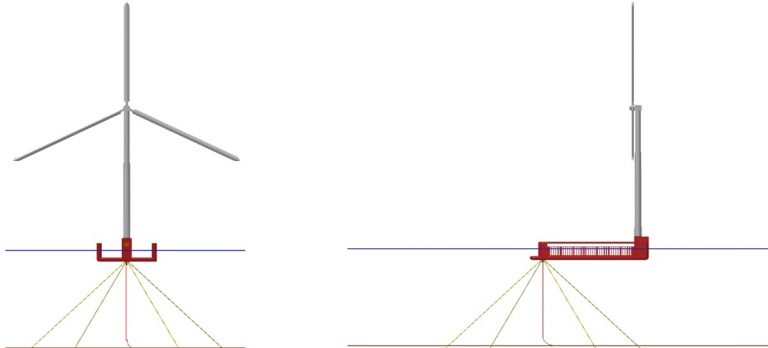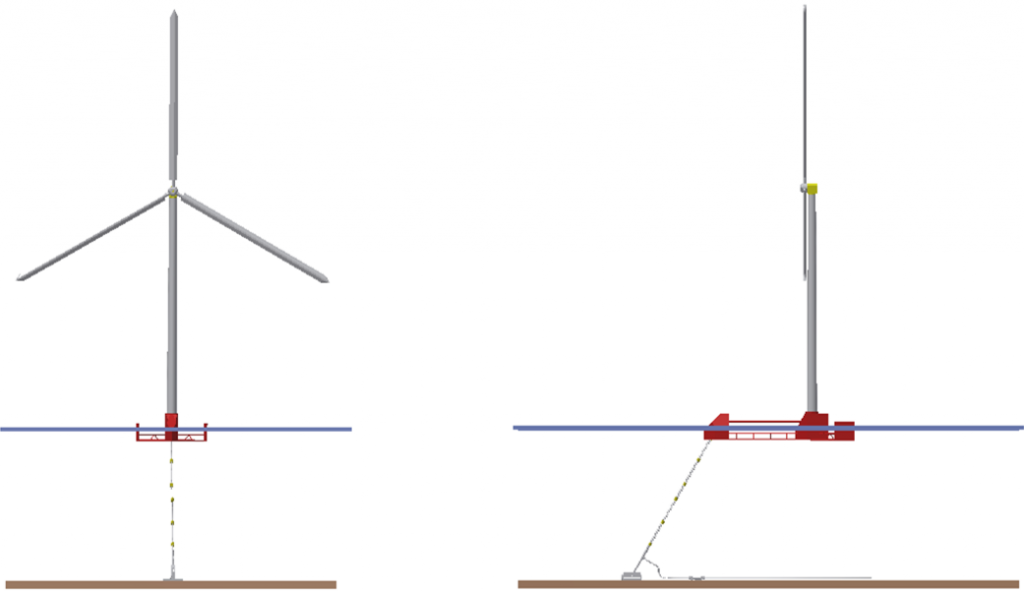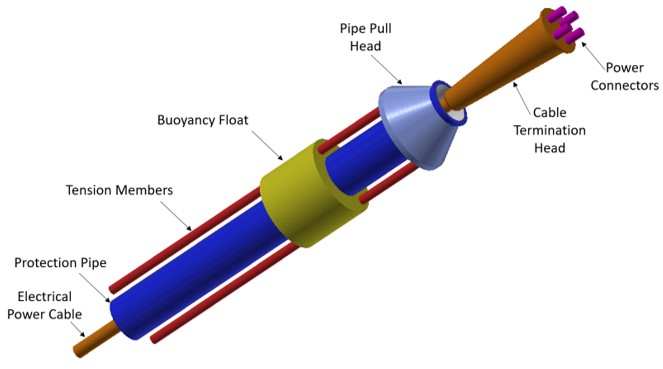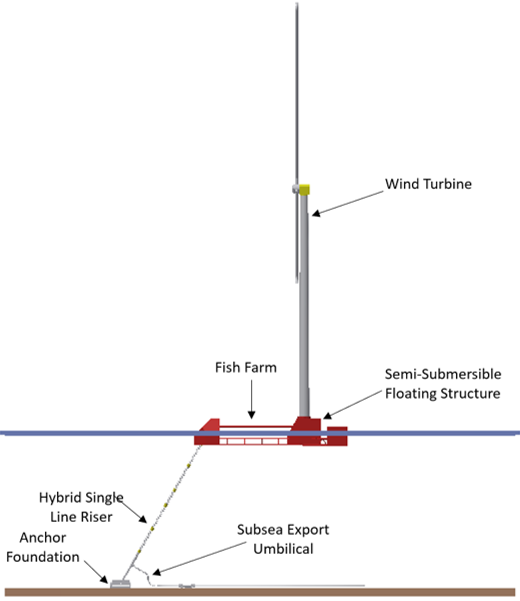Submerged Buoy Mooring System
The majority of floating wind structures, possibly 95%, are moored in a fixed position and heading using multiple mooring lines.
The structure and mooring lines have to be designed to accommodate the weather loadings from every direction. Personnel access has to be provided on all sides.
The moorings are generally individually attached to the structure on the surface at deck level. Individual pull-in winches are used at each mooring point.
Connection, and disconnection, of the mooring system involves the support of an anchor handling vessel. This is a complex process that may take a number of days depending on the weather and the configuration of the mooring system.
This is an expensive design as the structure and mooring system has to be very large to accommodate the loadings from all sides. Connection and disconnection will also be a costly exercise.
The Spintral system can use a submerged buoy mooring system, with multiple legs, that enables a weathervaning structure to be used.
When not in use, the submerged buoy would float at a position 20 – 30 m below the surface.
The floating structure would then be towed to the field and positioned above the buoy. The buoy would then be pulled upwards into the mooring turret by a single winch and then be mechanically locked into the turret. The electrical power transmission cables would then be connected.
In order to enable the high electrical power generated to be transferred from the wind turbine to the dynamic umbilical, a Continuity Connector is used in the mooring system. This avoids the requirement to use a slip ring and provides a continuous cable transmission system.
Connection and disconnection of the floating structure would be a very quick operation and not be very weather dependent.

The cost of the mooring system and the installation operations on a 10 MW system would be 15% of the expenditure, approximately £10.27m.
The use of a submerged buoy system should reduce the mooring system cost and also the number of structure pull-in winches required.
This system will also reduce the number of vessels required for connection / disconnection of the structure. The operation will also be much quicker and safer.
Hybrid Single Point Mooring System
As an alternative to a multi leg system, a hybrid single leg swing mooring system can be used.

The Hybrid Swing Mooring System combines the mooring system and the dynamic umbilical into a single catenary riser assembly.
This removes the requirement to have multiple foundation anchors, multiple mooring lines and an exposed dynamic umbilical. This will
result in reduced capital costs, quicker installation times and will provide enhanced protection for the umbilical during life of field operations.
The dynamic power transmission umbilical cable is housed within a steel riser pipe for protection. The pipe acts as a dynamic J Tube.
The mooring assembly will be connected to the floating structure and then the dynamic umbilical pulled through the riser assembly into the hang off and connection position.
The mooring loads will be supported by a number of tension chains/wires, positioned around the riser pipe. These will provide a high level of contingency, in the event of failure of one of the tension lines.
Buoyancy modules will support the riser catenary. When not in use, the top of the mooring would be positioned floated 15 meter below the sea surface, suspended on a marker buoy. During hook up to the structure, the marker buoy would be pulled into the structure mooring line hang off. The umbilical would then be connected.


The main feature of this system is that the electrical power cable is protected within a steel riser pipe.
One of the main problems experienced by the offshore wind industry is failure of electrical cables and connectors during installation and operation.
There is a risk that the dynamic cable between the seabed and the floating structure could also suffer damage.
By installing the cable within the riser pipe then it will be protected at all times. The pipe will also be filled with inhibitor fluids for additional protection.
The riser pipe will be supported by mooring chains and buoyancy in a hybrid single line assembly. Hybrid Single Line Mooring Brochure.
When not in use, the hybrid mooring line termination pullhead would float at a position 20 – 30 m below the surface.
The floating structure would then be towed to the field and positioned above the termination pullhead. The pullhead would then be pulled upwards into the mooring turret by a single winch and then be mechanically locked into the turret. The electrical power transmission cables would then be connected.
In order to enable the high electrical power generated to be transferred from the wind turbine to the dynamic umbilical, the power cable is allowed to spiral rotate within the steel riser. This avoids the requirement to use a slip ring and provides a continuous cable transmission system.
Hybrid Mooring Applications
The hybrid swing mooring system can be used for a range of floating offshore applications:
- Floating Wind
Tidal Stream Energy
Wave Energy
Floating Solar Energy
Offshore Aquaculture
Offshore Charging Buoy
